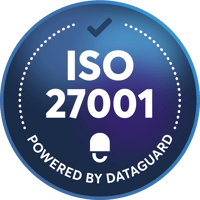Overview: ISO 27001 requirement 9.1
- Introduction
- What is ISO 27001 9.1 1 Monitoring, Measurement, Analysis and Evaluation?
- What needs to be monitored and measured ISO 27001?
- What are the requirements for monitoring and measurement of ISMS?
- What are KPIs for ISO 27001?
- Benefits of ISO 27001 9.1 MMAE
- How to Implement an ISO 27001 9.1 MMAE Program
- Conclusion
ISO 27001 is a widely recognized international standard that provides a framework for managing information security risks. One of the key requirements of ISO 27001 is to implement a monitoring, measurement, analysis and evaluation (MMAE) program.
The MMAE program helps organisations to ensure that their information security controls are effective and that their information security risks are being managed appropriately.
What is ISO 27001 9.1 1 Monitoring, Measurement, Analysis and Evaluation?
ISO 27001 9.1 MMAE is a process for monitoring, measuring, analyzing and evaluating the performance of an organisation’s information security management system (ISMS). It involves the following steps:
- Monitoring: Collecting data on the performance of the ISMS and its controls.
- Measurement: Quantifying the data collected in step 1.
- Analysis: Interpreting the data collected in step 2 to identify trends and patterns.
- Evaluation: Assessing the effectiveness of the ISMS and its controls based on the analysis performed in step 3.
What needs to be monitored and measured ISO 27001?
The following items need to be monitored and measured to evaluate the performance of an ISMS in accordance with ISO 27001 9.1:
- Information security performance: This includes monitoring and measuring the effectiveness of the ISMS in protecting the organisation's information assets. Examples of information security performance metrics include:
- Number of information security incidents
- Time to detect and respond to information security incidents
- Cost of information security incidents
- Compliance with information security regulations and standards
- Number of information security incidents
- ISMS effectiveness: This includes monitoring and measuring the effectiveness of the ISMS itself. Examples of ISMS effectiveness metrics include:
- Percentage of information security controls that are implemented and effective
- Percentage of ISMS processes that are completed on time and to budget
- Level of employee satisfaction with the ISMS
- Percentage of information security controls that are implemented and effective
The specific items that need to be monitored and measured will vary depending on the organisation's size, industry, and risk profile; however, all organisations should monitor and measure the items listed above to ensure the effectiveness of their ISMS.
In addition to the above, organisations may also want to monitor and measure the following:
- Information security risks: This includes monitoring and measuring the organisation’s information security risks to identify any new or emerging risks.
- Information security controls: This includes monitoring and measuring the effectiveness of the organisation’s information security controls to ensure that they are operating as intended.
- Information security awareness and training: This includes monitoring and measuring the effectiveness of the organisation’s information security awareness and training programs to ensure that employees are aware of the organisation’s information security risks and policies.
By monitoring and measuring these items, organisations can identify and address weaknesses in their ISMS, reduce the risk of information security incidents, and improve their overall information security posture.
Close up to 50% of your company’s biggest risks in as little as 8 weeks
Build a best-in-class ISMS with minimal effort and protect your company’s most valuable assets.

What are the requirements for monitoring and measurement of ISMS?
The requirements for monitoring and measurement of ISMS in ISO 27001 9.1 are as follows:
- Identify the information security objectives and risks that will be monitored and measured. This should be done based on theorganisation’s risk assessment.
- Select the appropriate monitoring and measurement tools and techniques. The tools and techniques selected should be appropriate for the size and complexity of theorganisation’s ISMS, as well as the information security objectives and risks that will be monitored and measured.
- Develop a monitoring and measurement plan. The plan should document the following:
- The information security objectives and risks that will be monitored and measured
- The monitoring and measurement tools and techniques that will be used
- The frequency of monitoring and measurement
- The roles and responsibilities for monitoring and measurement
- The process for analyzing the data collected and reporting the results
- The information security objectives and risks that will be monitored and measured
- Implement the monitoring and measurement plan. This involves collecting data on the performance of the ISMS and its controls and analyzing the data to identify trends and patterns.
- Evaluate the effectiveness of the ISMS and its controls. This involves assessing the effectiveness of the ISMS in meeting the organisation’s information security objectives and managing its information security risks.
- Take corrective action as needed. This involves taking action to address any weaknesses that are identified in the ISMS or its controls.
Organisations should also ensure that their monitoring and measurement program is aligned with their overall information security strategy and that it is regularly reviewed and updated to ensure that it is effective.
Here are some additional tips for implementing an effective monitoring and measurement program for ISMS:
- Make sure that the program is tailored to the specific needs of the organisation.
- Use a variety of monitoring and measurement techniques to get a complete picture of the ISMS's performance.
- Regularly analyze the data collected to identify trends and patterns.
- Use the results of the analysis to improve the ISMS.
- Communicate the results of the monitoring and measurement program to relevant stakeholders.
What are KPIs for ISO 27001?
Key performance indicators (KPIs) are measurable values that are used to track and measure the performance of a system or process. KPIs can be used to measure the effectiveness of an ISO 27001 information security management system.
Some common KPIs for ISO 27001 include:
- Number of information security incidents
- Time to detect and respond to information security incidents
- Cost of information security incidents
- Compliance with information security regulations and standards
- Percentage of information security controls that are implemented and effective
- Percentage of ISMS processes that are completed on time and to budget
- Level of employee satisfaction with the ISMS
Organisations can also develop custom KPIs that are specific to their own ISMS and information security objectives.
It is important to note that there is no one-size-fits-all set of KPIs to achieve ISO 27001 certification. The specific KPIs that are most relevant for an organisation will vary depending on its size, industry, and risk profile.
Once the KPIs have been selected, organisations should regularly monitor and measure their performance against these KPIs. This will help them to identify areas where the ISMS can be improved.
Your ISO 27001 certification process made simple.
Get ISO 27001 certified in as little as 3 months.

Benefits of ISO 27001 9.1 MMAE
There are many benefits to implementing an ISO 27001 9.1 MMAE program, including:
- Improved information security posture: By regularly monitoring and measuring the performance of the ISMS, organisations can identify and address weaknesses in their information security controls. This can help to improve the overall security posture of the organisation.
- Reduced risk of information security incidents: By identifying and addressing weaknesses in the ISMS, organisations can reduce the risk of information security incidents occurring.
- Improved compliance: An ISO 27001 9.1 MMAE program can help organisations comply with various regulations and standards, such as the ISO 27001 framework or the General Data Protection Regulation (GDPR).
- Increased confidence from stakeholders: An ISO 27001 9.1 MMAE program can help to increase confidence from stakeholders, such as customers, partners and investors, that the organisation is taking steps to protect its information assets.
How to Implement an ISO 27001 9.1 MMAE Program
To implement an ISO 27001 9.1 MMAE program, organisations should follow these steps:
- Identify the information security objectives and risks that will be monitored and measured.
- Select the appropriate monitoring and measurement tools and techniques.
- Develop a monitoring and measurement plan.
- Implement the monitoring and measurement plan.
- Analyze the data collected.
- Evaluate the effectiveness of the ISMS and its controls.
- Take corrective action as needed.
Conclusion
An ISO 27001 9.1 MMAE program is an essential tool for organisations that want to ensure the effectiveness of their information security management system. By implementing an MMAE program, organisations can identify and address weaknesses in their information security controls, reduce the risk of information security incidents, improve compliance, and increase confidence from stakeholders.
up to 50%
Cheaper than external consultants
up to 300%
Increase your opt-in rate with Consent & Preference Management
3 months
Get audit-ready in as little as three months
100%
First-try pass rate in external audits on ISO 27001 and TISAX®
Saves up to 100 hours
of manual work to get ISO 27001 certified or TISAX® labels
Customers trust us
P I C
PRIVACY
External DPO
Audit and risk analysis
Data Subject Requests
Online training courses
Cookie & Preference manager
Business advice from experts
INFOSEC
Prepare for ISO 27001
Build an ISMS
Cyber security
Asset management
Risk mitigation
Internal audit
COMPLIANCE
Digital whistleblowing system
Whistleblowing support
Compliance audit
Risk mitigation
Online training courses
Templates
ISO 27001:2022 requirements
Trusted and used by companies





TISAX® is a registered trademark of the ENX Association. DataGuard is not affiliated with the ENX Association. We provide consultation and support for the assessment on TISAX® only. The ENX Association does not take any responsibility for any content shown on DataGuard's website.
All data provided is for information only, based on internal estimates. This information is not indicative of KPIs, and is not given with any warranties or guarantees, expressly stated or implied in relation to accuracy and reliability.


